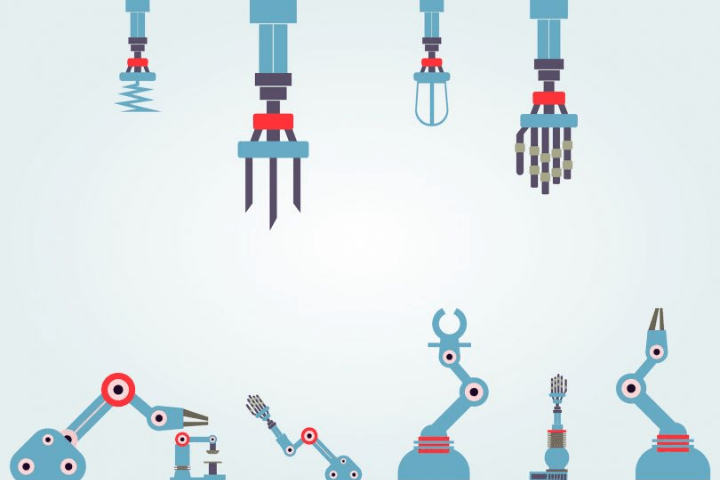Robotics is a multidisciplinary technical & scientific field that deals with the development, design, and application of mechanical machines. Our session will provide you with a solid understanding of robotics by exploring various kinds of technology & how robotics will utilize in different sectors. Robots are created at the crossroads of engineering, technology & science to replace (or replicate) human jobs. Robotics has remained a source of fascination in popular culture.
These grandiose, humanoid robot concepts are almost often parodies of the actual thing. Is it possible that they are more perceptive than we realize in future? In 2005, automobile manufacturing plants will host 90 per cent of the overall population of all robotics. Today, we see an improved & larger concept of robotics which involves machines that explore the world’s harsh environments. These robotics can also help with law enforcement and nearly every aspect of healthcare. While the robotics domain is growing, some features of robotics remain constant.
- Every robot has a mechanical foundation. A robot’s mechanical component assists it in performing duties in the context. A Mars 2020 Rover, for instance, features autonomously driven titanium tube wheels that enable it to securely grasp Mars (the red planet’s) unknown terrain.
- Electrical components are required for robots to power & control the machines. Ultimately, an electrical discharge (such as a battery) will enable different robots.
- Robots have some amount of computer programming. A robot would be little more than a piece of simple hardware if it did not have a set of instructions informing it what to do. Inserting a program into a robot provides it with the capacity to understand when & how to do a task.
Robotics Classification
AI robots come in different sizes & shapes to do the tasks accordingly as they will intend. Each robotics is distinctive in design, function & level of autonomy. From “RoboBee” (0.2 millimetre-long robot) to “Vindskip” (the 200-meter-long robot) will emerge to perform jobs that humans cannot. With advancements in robotics, Individuals likely see the industry’s potential relatively soon. The main focus in industrial automation will face more severe problems. Robotics will be discovering executing activities that humanity could never imagine undertaking alone, from the deepest reaches of our seas to thousands of metres in space.The following robots are:
Automated Robots With Pre-Programmed Algorithms
In a controlled setting, pre-programmed robotics do simple, time-consuming activities. A mechanical arm on an assembly line is an example of a pre-programmed robot. The bot arm performs a single operation, like riveting a door or inserting a particular section through a machine. And its goal is to accomplish it for a faster, longer & more productive time than a person.
Humanoid Robots
Humanoid robots are machines that copy or mimic human behaviour. These robots frequently do human-like tasks (like leaping, running & carrying objects) and are sometimes meant to replicate people, including human qualities and attitudes. Hanson Robotics’ Sophia (seen above) & Boston Dynamics’ Atlas are two of the most well-known examples of humanoid robots.
Self-Driving Robots
Users don’t need to handle the operations for self-driving/autonomous robots to work. These robots often intend to do jobs in open spaces without human supervision. They are particularly distinctive in that they utilize sensors to assess their surroundings and then use decision-making mechanisms (typically a computer) to pick the best action depending on their data and purpose. A Roomba vacuum that utilizes sensors to move freely throughout a home will illustrate an autonomous robot.
Telecontrolled Robots
Teleoperated robotics are semi-autonomous machines that employ a wireless connection to allow remote human control. These robots will use in harsh geographical situations, weather, and scenarios. User-controlled submarines used to repair undersea pipe breaks during the BP oil spill are examples of teleoperated robots, as are drones used to locate landmines on a battlefield.
Robot Assisting
Augmenting robots either improve on present human skills or replace those. The topic of robotics for genetic enhancement is one in which science fiction will come to reality quite soon, with bots capable of redefining humanity by making people quicker & stronger. Current augmenting robots include mechanical artificial arms and exoskeletons capable of bearing massive weights.
Robotics Operations
Self-Awareness In Robots
Independent robots may operate independently & without the involvement of a human operator. These often need more advanced programming, but they enable robots to replace people in hazardous or otherwise activities that range from explosive ordnance disposal to profound exploration to industrial automation. Autonomous robotics have shown to have most destructive to society, replacing low-wage employment while creating new ones.
Human-Assisted Robots
Non-autonomous robotics that interact with people to complement & enrich their current behaviours are known as dependent robots. Advanced prosthesis operated by the human mind is one type of reliant robotics that will create. Johns Hopkins APL developed an example of dependent robotics for a patient named Johnny Matheny in 2018.
A Robot’s Basic Components
Robots react to a wide range of needs and carry out varied activities. Due to this, they require a diversified collection of hardware platforms to carry out these jobs. However, numerous components, like a power source or a CPU, are necessary for creating every robot. In essence, robotics components will divide into five categories.
- Command & Control (C&C) system
- Detection Devices
- Actuators
- Power Source
- Repercussions
Applications For Robotics
Robotics has varied uses, making them an appealing future technology. Soon, we will see robots almost everywhere. They’ll be seen at clinics, motels & even on the highways.
- Industrial production
- Transportation & logistics
- Residence
- Traveling
- Medical care
Uses Of Robotics
The uses are varied according to the following usage of humankind in different areas globally. Each area will be using the keen factors that will aid the humankind using Artificial Intelligence machine robots.
- Assisting in the suppression of forest fires
- Working with employees in manufacturing facilities (known as co-bots)
- Robots that give elderly companionship
- Surgical technicians
- Package and meal order last-mile delivery
- Autonomous residential robotics that does tasks like vacuuming & grass mowing
- Aiding in the locating of items and moving them throughout warehouses
- Used throughout search-and-rescue operations following natural disasters.
- In combat zones, landmine detectors
Also Read: Edtech Companies Are Transforming The Way We Learn











